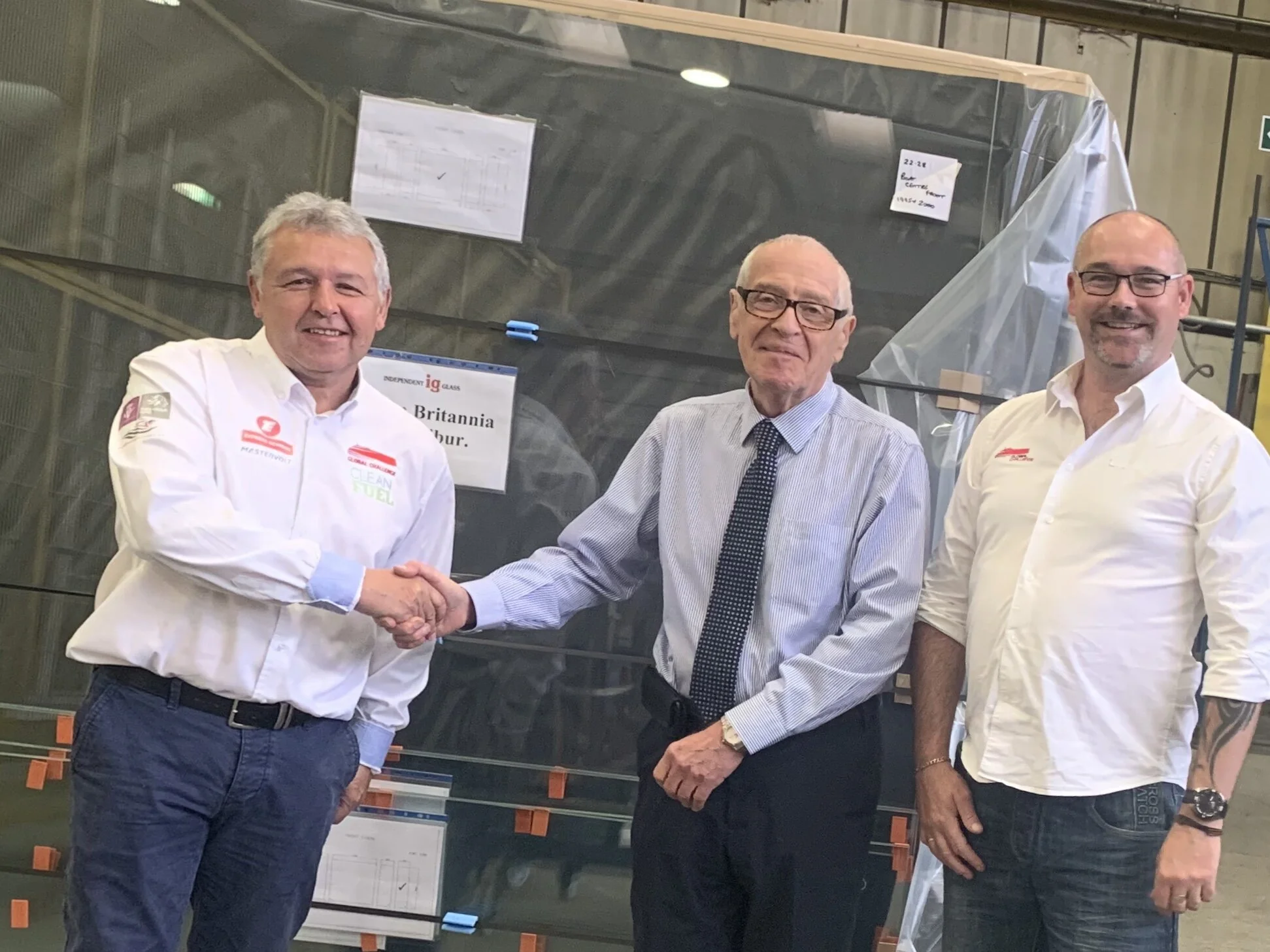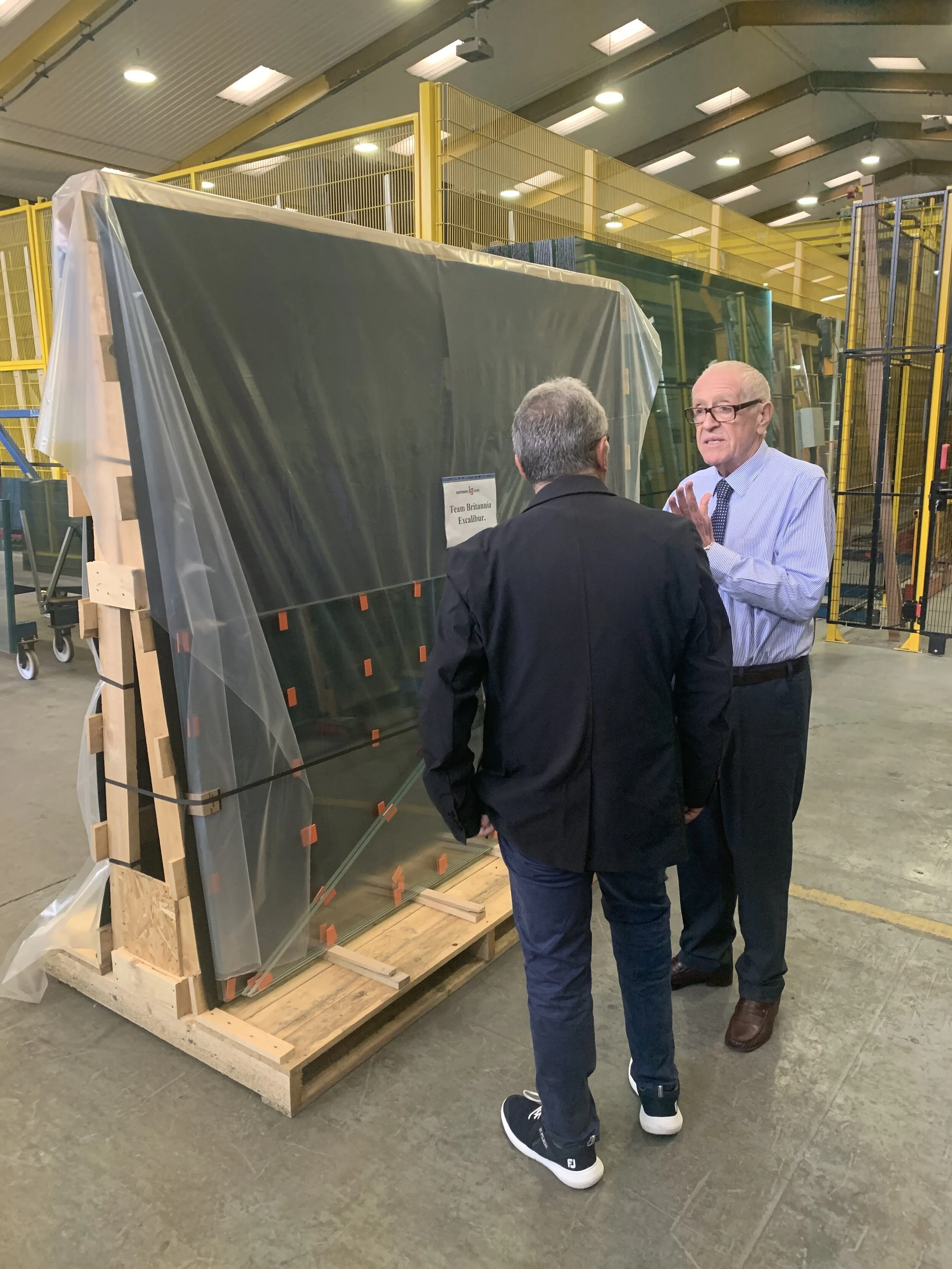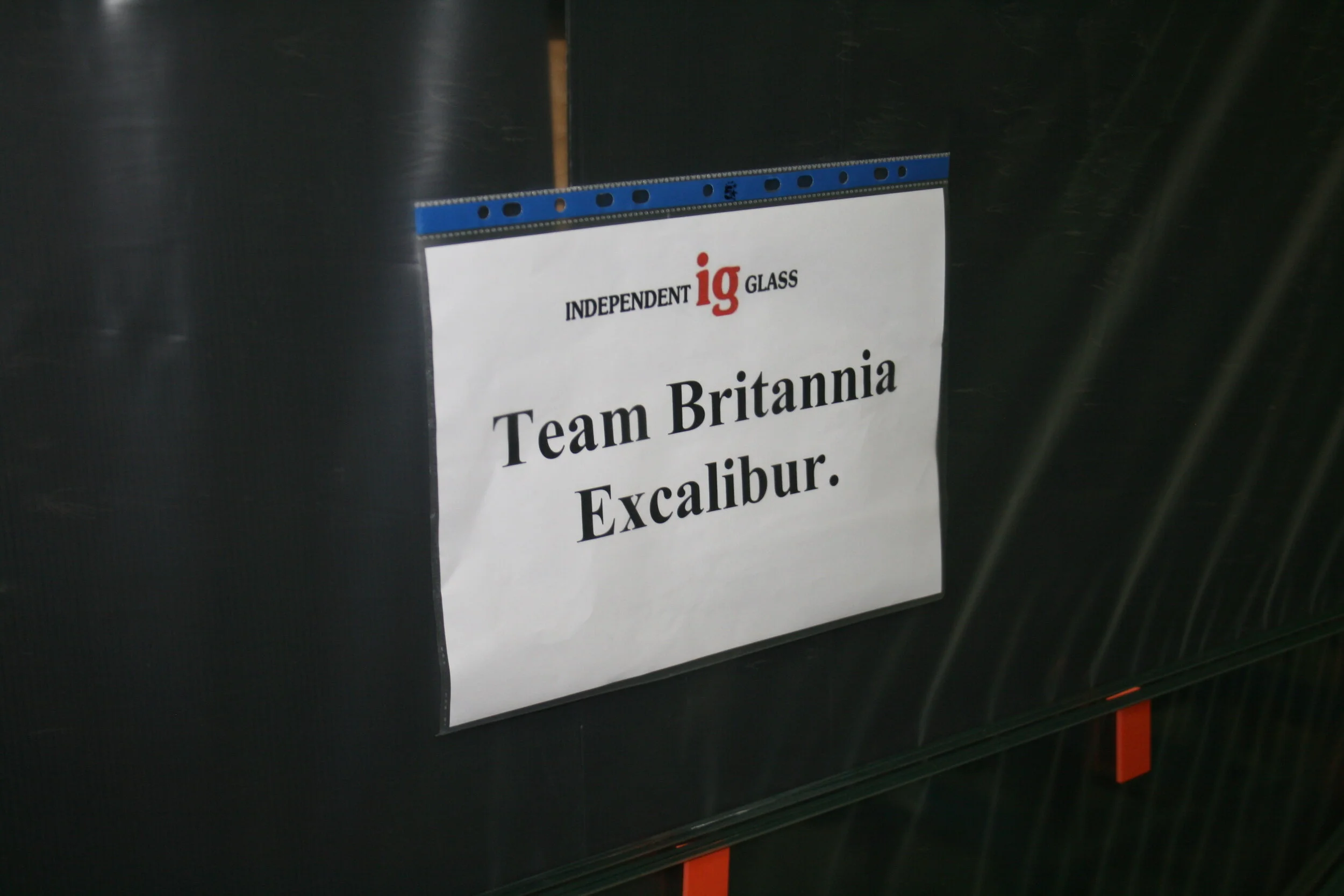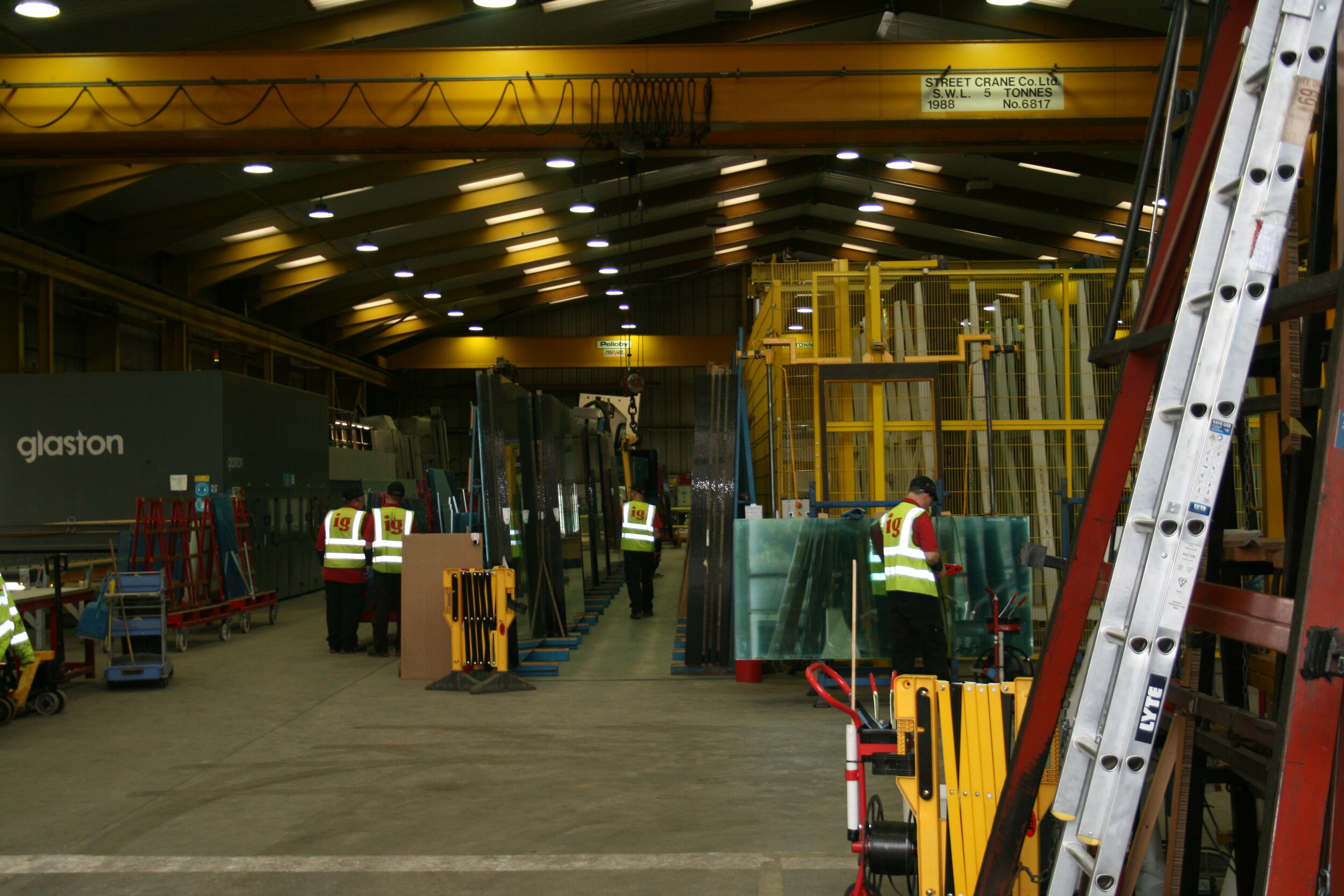Excalibur reaches major milestone with installation of “hurricane proof” glass
Team Britannia’s superboat, Excalibur, has reached a second milestone this month with the installation of its “hurricane proof” glass.
The special low iron glass from Scotland - toughened, heat soaked and laminated with a special ionoplast interlayer - took a week to fit, with the final pane being secured in place earlier today, making the revolutionary 80ft semi-wave slicing vessel watertight.
Just two weeks ago, the massive vessel, with its distinctive design, was carefully lifted into the water and moved to the Hayling Yacht Company, where work has started on commissioning her engines and the final stage of the fit out.
The superboat was designed by Professor Bob Cripps, the former Technical Director of VT Halmatic. It has been constructed out of marine-grade aluminium and encompasses an exceptionally efficient hull, which will cut fuel consumption by up to 30 per cent.
Ocean racing legend and Team Britannia’s skipper Dr Alan Priddy, commented: “After three and a half years we are in the final stages of finishing off Excalibur and I am delighted by the recent progress. Since the start of the month, we have wrapped the hull and lifted her out of the boatyard, where she was built and put her into the water. Now with the installation of this super-tough, hurricane proof glass, Excalibur is watertight and ready for her engines to be commissioned.”
The glass was made by Independent Glass, based in Glasgow. The firm is one of the largest glass processing companies in the UK, operating from three sites in Glasgow and one in Mansfield.
Using their state-of-the-art equipment they produced the low iron super tough glass for extra optical clarity.
John Devine Sr from Independent Glass explains: “Toughened glass is up to five times stronger than float glass of the same thickness. When it breaks, it fragments into small blunt-edged pieces. The glass is toughened by heating in a furnace to approximately 600 degrees followed by rapid cooling. This creates high compressive stress on the outer surfaces and tensile stress internally. In rare cases, toughened glass can break due to the presence of nickel sulphide inclusions within the glass. Heat soak testing of toughened glass further reduces the possibility of such breakages.
“The glass is then laminated by bonding with an interlayer using heat, vacuum and pressure inside an autoclave. Laminated glass is held together by the interlayer when broken. The specialist ionomer interlayer was initially developed for hurricane glazing and large missile testing requirements. Compared with standard PVB interlayers commonly used in road vehicles, it is much stronger, 100 times stiffer, offers improved weather resistance and performs over a wider temperature range.”
He added: “We are very happy to be working with Team Britannia in their world record bid and delighted to be providing Excalibur with this incredibly tough glass.”
Following the commissioning of the engines and sea trials, Team Britannia will launch their record attempt in one of the two weather windows, normally March or October. Their proposed route will see them start in Gibraltar before calling at Puerto Rico or Antigua, Manzanillo, Honolulu, Guam, Singapore, Oman and Malta. The trip will qualify for a number of additional powerboating records or port-to-port records, which are part of the seven stages, or legs.
In an effort to make this record attempt “as green as possible”, the superboat will be powered by a revolutionary fuel emulsion, a mixture of diesel, water and emulsifying agent, which reduces harmful emissions such as particulate matter and nitrogen dioxide.
The effects of the emulsified fuel on the engines and the emissions will be monitored for the duration of the voyage and the results beamed back to the UK for analysis.
Additionally, the crew will be taking seawater and air samples every hour, recording the exact longitude, latitude and temperature before analysing the plastic content, to build up a unique map of microplastics in the water and air.
Alan concluded: “The whole crew and I want to thank John and his amazing team at Independent Glass for backing the project and delivering a product that is incredibly strong and that will be able to take whatever is thrown at us on our 42,000km record attempt.
“Our next milestone will see the engines roar into life and the installation of the vast array of sensors, monitoring everything from the engines, emissions and even the crew. So day by day we are getting close to announcing our final timetable for the record attempt and securing a title sponsor who will enable us to bring home the world record to Great Britain.”
ENDS






